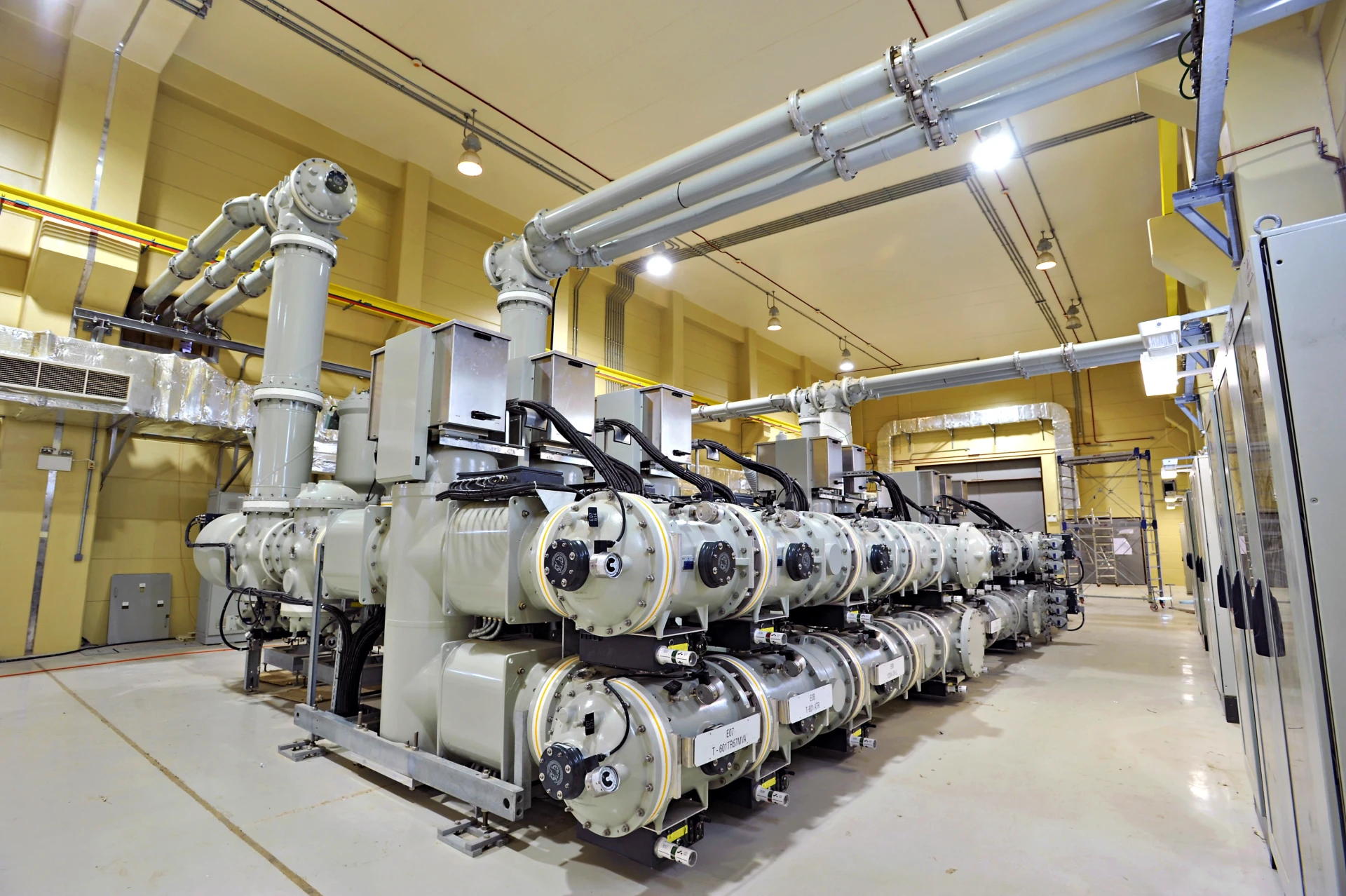Application of Gas Insulated Switchgear for Renewables and Real Estate Industry
- misun energy
- Dec 11, 2024
- 3 min read
Gas Insulated Switchgears, popularly known as GIS, are very successfully utilized in Industries and Utilities for Medium Voltage (MV), High Voltage (HV) and Extra High Voltage (EHV) worldwide. Choice of GIS is mainly governed by the space constraint and minimal maintenance needs, this is also advantageous where environmental conditions like snow fall or corrosive atmosphere may need increased maintenance of open to air or Air Insulated Substations (AIS). Inherently GIS has a very long service life of more than 30 years with almost no maintenance.
When we say “Air Insulated” or “Gas Insulated” substation, it is basically the insulation which exists between exposed parts of the substation. In case of Air Insulated Substations (AIS), broadly the exposed current carrying parts i.e. conductors are installed at a particular mutual distance, and natural air acts as an insulation medium between them. In case of GIS substations, all current carrying parts are encapsulated in gas-tight metallic enclosure, filled with pressurized SF6 (Sulfur Hexafluoride) gas as the insulating and arc quenching medium. Use of pressurized SF6 gas as insulating medium enables much smaller mutual spacing between current carrying parts, so the size of the switchgear becomes very compact. SF6 is a dry inert gas which is non-flammable and does not age by itself.

In a GIS, all components in a particular feeder circuit are placed close to each other inside modular metallic encapsulation, so this also results in omission of many components e.g. post insulators for conductor support, outdoor support structures, string insulators etc. which are otherwise required for an AIS. As a result, in comparison to AIS, GIS occupy as little as one third of the space. So, GIS has many distinct advantages over AIS and significantly reduces the life-cycle cost due to almost no maintenance needs, and used even for unmanned substations by many utilities. Civil works cost is also significantly reduced in case of GIS, as it needs only a GIS building compared to AIS which needs large land area to be acquired, developed, shaped, treated, gravel filled, heavy equipment and structural foundations etc.
GISs are available in Medium Voltage (6.6kV up to 33kV), HV (66kV to 245kV) and EHV (above 245kV). It can be installed faster and hence put to use quickly. EHV GISs are also available for direct outdoor installation.
It may be ideally suited for land-based Solar PV projects where space is a constraint or floating solar PV projects where the main objective is to minimize the use of large land space or other renewable energy projects as well. Apart from saving space, overall O&M cost can be significantly reduced in case of GIS where environment pollution levels are high. Conductive or moist dusts may lead to arcing and flash-overs in outdoor AIS HV or EHV substations, resulting in loss of supply, damage of components, heavy maintenance costs and collateral damages.
In large scale Solar PV projects, most of the project management activities go towards installing the plant itself spread across several acres of land, leaving lesser resources available for installing the substation or transmission network for power evacuation. This may result in additional cost allocation for building an air insulated substation which is quite elaborate, spread across large area, contain several separate components and consumes longer time to install. In such a scenario, GIS is a very useful solution which is mostly factory assembled modular type and hence takes a lot lesser time to install and put into service. This in turn reduces the overall project completion period and the developers can start generating revenues faster.

In real estate segment, some reputed developers in India have installed MV and HV GIS for their large residential townships and commercial buildings projects. GIS can be safely installed in the building basement, in underground chambers below lawns etc or in a separate building as well, and saved space can be used for other facilities. A cost-benefit analysis can help to arrive at suitable decision of whether to adopt AIS or GIS technology for a particular project, but generally it weighs towards GIS for larger projects due to its distinct advantages.
Have questions? Contact us.




